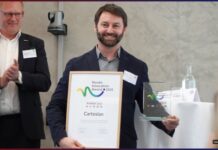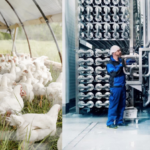LEGO er for mange kjent som leketøy for barn, men faktisk kryr det også av voksne brukere, og disse har hatt en enorm påvirkning på LEGOs utvikling og deres suksess etter årtusenskiftet.
Med 30 år i selskapet, nå som Head of LEGO Community Engagement, er norske Tormod Askildsen en av de som står bak LEGOs comeback. For omlag ti år siden, etablerte LEGO et prosjekt hvor de undersøkte og analyserte en rekke forumer der kreative voksne brukere av LEGO eksperimenterte og utviklet nye konsepter. I perioden fra 2003 frem til 2011 ble det samlet en masse informasjon gjennom observasjon, kommunikasjon og dybdeintervjuer av voksne brukere.(1)
“Observasjon av – og dialog med – AFOL (Adult Fans Of LEGO) omkring den grunnleggende LEGO-ideen, bidrog vesentlig til det skarpe fokuset på LEGO-byggesystemet, forbrukerne og kreative lekeopplevelser som fikk LEGO-gruppen tilbake på rett kjøl.” forteller Askildsen.
I 2012 fantes det over 150 kjente AFOL-grupper globalt, med over 100.000 aktive voksne brukere fra hele verden.(1) Ved å aktivt inkludere og prosessere den kunnskapen og entusiasmen som tusenvis av langtidsbrukere av LEGO besitter, har de hatt anledning til å utvikle seg i takt med brukernes behov og forbedre sitt produkttilbud, uten å øke de langsiktige kostnadene til utvikling og markedsundersøkelser.
I artikkelen under, kan du lese mer om hvordan dette økosystemet er bygd opp.
Tormod Askildsen, kommer til InnovasjonsDagen den 9 september for å fortelle mer om sin 30 år lange reise i LEGO, og deres suksess med åpen innovasjon i samarbeid med sine brukermiljøer.
1. MIT Sloan, Management Review – Magazine: Spring 2012, Research Feature, March 20, 2012.
“Collaborating With Customer Communities: Lessons From the Lego Group” (http://bit.ly/1cpsjLY)
Photo: http://beautifuldecay.com/2011/01/27/adult-fans-of-lego-a-blocumentary/screen-shot-2011-01-26-at-11-11-02-pm
————————————————————————————————-
The LEGO Ecosystem
Increasingly, the term ecosystem has made its appearance in “management-speak”. Inherent in the concept is the fact that stakeholders (the firm, its employees, customers, suppliers etc.) are more interdependent than ever and that their roles have become more interconnected. An archetypical example is Apple’s ecosystem, consisting of the music publishers whose music is sold through iTunes, the application developers whose apps are sold on the App Store, the mobile providers whose networks the iPhone capture, the fans who belong to the Apple User Groups and who line up overnight to be the first to buy new products and more.
An ecosystem in business, just as in biology, functions as a self reinforcing whole whose components create value for each other through the relationships that hold them together. Over the years we have witnessed how the LEGO ecosystem has emerged, taken form, and have created a host of valuable experiences for the LEGO users and the LEGO Group. In this brief article, we share key insights from our continuous studies of the LEGO ecosystem.
The LEGO Ecosystem of Adult Users
At the center of the LEGO ecosystem is creativity. It starts with the creativity of a single LEGO user playing with LEGO bricks to express a mood or an idea, that then serve to inspire others, driving more play, more creativity, and engagement.
Through the network of relationships and “co-creativity” between LEGO Users and the LEGO Group, we see evidence of a veritable ecosystem of users with a strong organic foundation, having developed around the LEGO experience. In our research, we have focused on one particular group of LEGO users who identify themselves as AFOLs (Adult Fans of LEGO).
Many AFOLs are accomplished professionals who find both a welcome disconnect and a productive continuity between their “day job” and their “LEGO job”. We are therefore not surprised to find that there is massive spillover of competencies from the AFOLs’ work and educational occupations to their LEGO hobby, an indication of the coherence that results from their creative explorations.
AFOLs have manifested themselves not only as consumers, but also producers of content, ideas, services and much more. They have formed LEGO User Groups (LUGs) all over the world to practice their hobby and share their interest in LEGO products with likeminded others. In our study of the LEGO ecosystem, we learned that it comprises three distinct, interconnected levels.
The Micro level – the Jobs individual AFOLs are looking to get done
We begin the description of the LEGO ecosystem at the micro level by reviewing the jobs which individual AFOLs “hire” LEGO products to get done for them.
We find that there are specifically the following five jobs that AFOLs “hire” LEGO products or their LEGO hobby to perform:
- To have a creative outlet
- To practice problem-solving skills
- To forge social relationships
- To escape and relax
- To craft a coherent life story
AFOLs create and share content that they know will satisfy the community’s taste and need for new inspiration to fulfill these jobs and to reach a higher creative level. They work on managing the community experience by removing language barriers and by educating one another in how the LEGO elements and sets are best used and understood. They design and implement infrastructures and set the frames for interaction thus making it easier for other AFOLs, adult newbies and experienced teenage users alike, to get together and interact. Together, these activities actually go beyond the needs of the individual AFOL. Thus, we observe that AFOLs also assume responsibility for the community as a whole.
The Macro level – scaling up from One to Thousands
This takes us to the next level in the ecosystem, the macro level. The macro level exhibits a veritable “value manufacturing” system where the resources accessed are entire collections of bricks, whole segments of buyers, repositories of skills and competences, large groups of users and more. The activities performed at this level reflect volume and systematization – website management, magazine publishing, supply chain management, community organization, payment systems, customer relationship management and more.
The Meso Level – stabilizing the Ecosystem
As the micro forms into the macro, rules and practices evolve and disappear, other rules or practices appear and take hold. These types of interactions constitute the “meso-level” of the ecosystem, the processes through which resources such as knowledge, skills, passion, emotion, financial and so on are shared by stakeholders. It is the effects of repetition and dissemination that turn the accidental and ephemeral into stable and adaptive content and rules and regularities can take hold.
This stabilization phenomenon is one of adaptive evolution – traits that are efficient and relevant will remain and stabilize as they spread through a population, while those that are neither are bound to disappear. In the case of an ecosystem, the meso level and its stabilized patterns play the important role of institutionalizing shared goals and culture, and as a result, multiplying value creation at the macro level.
The notion of viewing users as connected through an ecosystem introduces a new and powerful lens for understanding how a brand is filled with meaning and value not only by the actions a company takes, but though the jobs users are looking to get done, the collective rules and practices they cultivate, and the “value manufacturing” activities that arises when thousands of enthusiastic users from all over the world get together to experience the brand, together.
Written by:
Yun Mi Antorini
Marie Taillard
Tormod Askildsen








